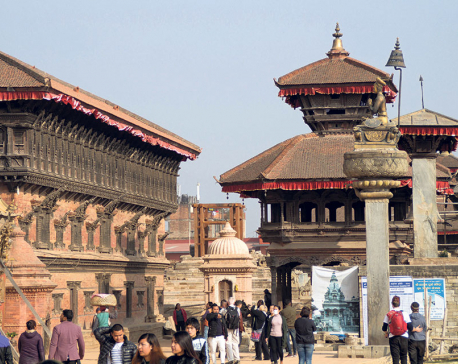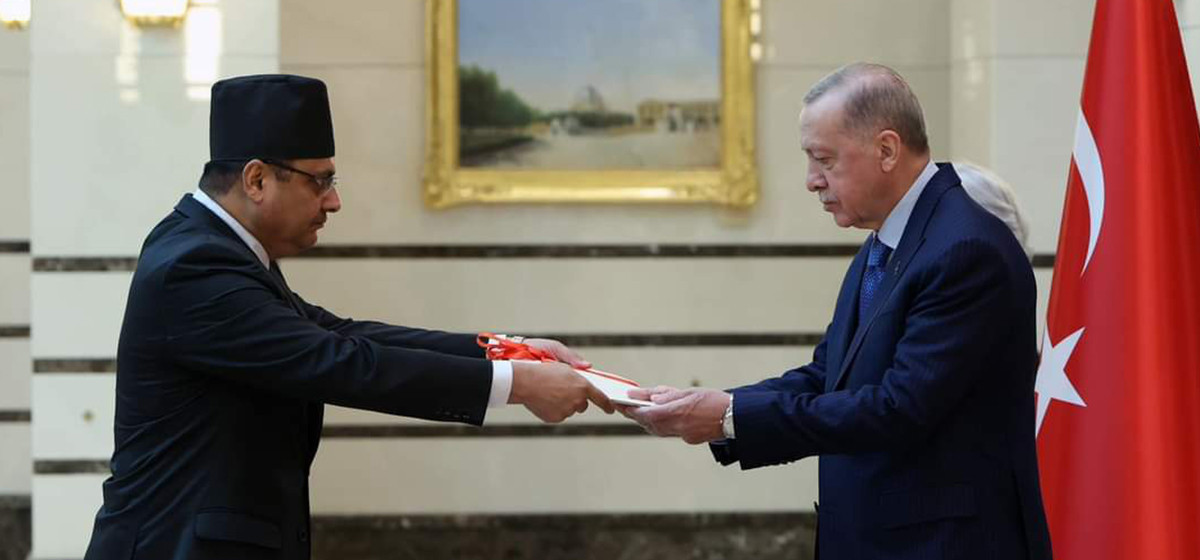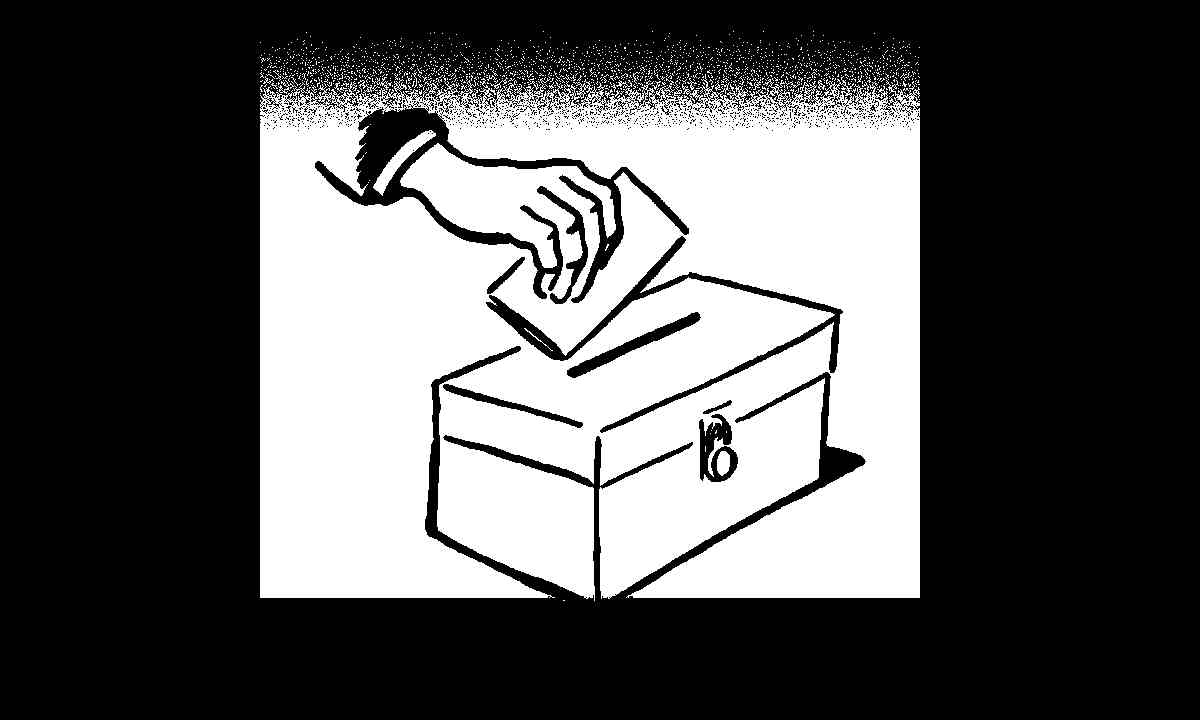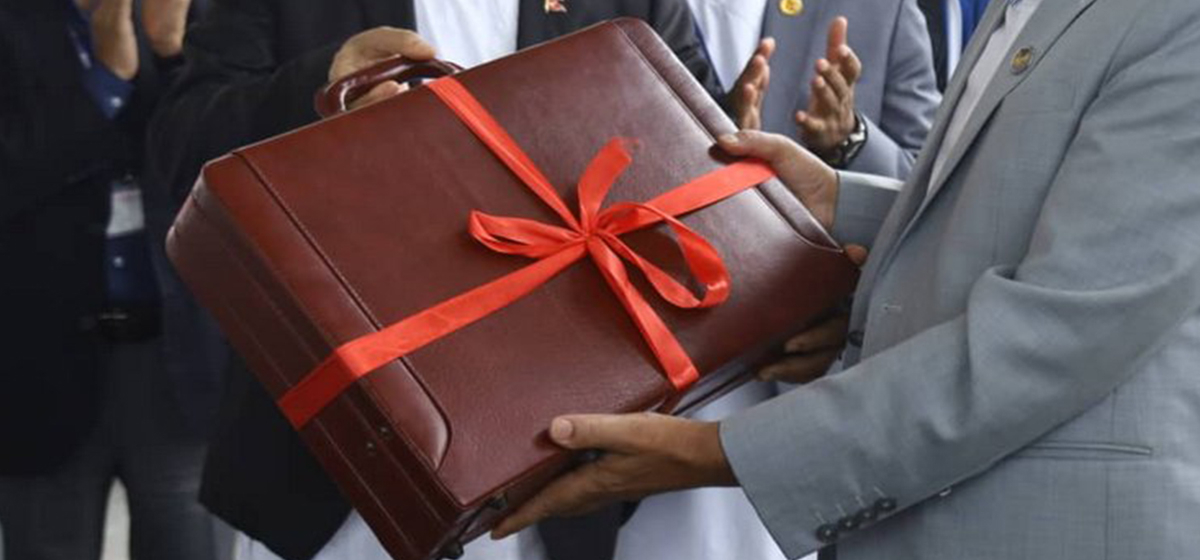
OR
How to deal with Nepal? India may take a leaf out of British Raj
Published On: May 25, 2020 03:00 PM NPT By: Sujit Mainali

What can modern India learn from the Nepal policy of their colonizers? One big lesson is not to occupy land of this tiny nation and settle the disputes amicably.
Indians often pursue the legacy of the British Raj while executing their foreign policy. The maritime security has become a matter of concern to India very recently and thus Indians have less to learn from its colonial history in this regard. However, its engagement with immediate neighbors including Nepal is closely in line with the legacy of British colonialism.
Right since its independence, since the time of Prime Minister Jawaharlal Nehru, India has considered the Himalayas as its natural frontier in the north. In this narrative, Nepal and Bhutan are seen as India’s backyards, where Chinese influence must be checked, even by using military means if necessary. Post-colonial India inherited this idea from the British Raj.The foreign affairs establishment of India is in such adoration of British Raj that in the early 1990s, JN Dixit, India's foreign secretary during the time, called Lord Curzon, the viceroy of British India from 1919-1924, among "thegreatest of the Indian nationalists."
Likewise, India’s foreign and defense affairs experts unanimously agree that India’s international relation is strongly rooted on the experiences of the colonial past. They even claim this policy is advantageous to India. But when it comes to Nepal, India has taken a sharp departure from British policy in some crucial cases. Here is how.
Lust for land
Border dispute led to war between Nepal and British India in 1814 where Nepal was defeated and had to surrender about one third of its territory to the East India Company. But Britain had attempted to acquire Nepal's territory forcibly even before this war. When Prithvi Naryan Shah was on the verge of annihilating kingdoms of the Kathmandu Valley, East India Company sent a military mission in 1767to fight the Gurkha invaders. But the expedition faced fierce resistance from Gurkhali in the fort of Sindhuli. They could not withstand the Gurkhas. After being forced to retreat, leader of the expedition Caption Kinloch occupied Gurkha territories of Bara, Parsa and Rautahat, which was adjacent to British occupied territory of Bettiah. Kinloch and his superiors in Bettiah and Patna were determined to continue with the occupation of Nepali land. But they withdrew after the Select Committee decided to take up policy of appeasement with the Gurkha king.
British India’s lust for land reached its peak during the war of 1814. After Nepal was defeated in the war, British tried to foment secession in the territories that were to be remained with Nepal after cession of one third of its territorial possessions lying across Mechi River in the east and Mahakali River in the west. The British tried to incite secession in Doti region of western Nepal. The British were encouraging Chautariya Bum Shah, the courtier of Nepal assigned by Kathmandu to oversee the military and administrative affairs of the Kumaun region, to caste off his allegiance to Kathmandu and to become king of Doti with the help of the British.
In a letter written to lieutenant-colonel Bradshaw on August 5, 1815, the Governor General of the East India Company Lord Moira wrote: “Should Bum Sah . . . actually establish himself in Dootee, and cast off his allegiance to the Government of Nepaul, an article must be inserted in the treaty [whose draft was yet to be finalized], binding the Rajah of Nepaul to acknowledge his independence, to respect his territory, and to submit all differences which may hereafter arise to our arbitration.” But Bum Shah declined. Rather he wrote to Kathmandu and hinted that the British are “encouraging a double negotiation” with Nepal. Refusal of Bum Shah foiled East India Company’s attempt to further reduce the size of the dominion of Nepal.
However, in the end, Nepal was eventually forced to sign the Treaty of Sugauli. The repeated plea of Nepali courtiers to reconsider British determination to take away the entire possessions of Tarai was not listened to. Land of Tarai region was fertile. Forests of the region were very rich in terms of the supply of timber and elephants which had good market value. Dispossession of entire Tarai region would have deprived Nepal from a lucrative source of income. Furthermore the malaria infected dense forests of Tarai served as a natural deterrence of Nepal against the southern neighbor. Without Tarai, Nepal would become defenseless, which is why courtiers like Bum Shah never agreed to this proposition. Instead, he warned Parish Bradshaw in one of the letters: “Never will we consent to give you the terai, take the terai and you leave without the means of subsistence for the hills, without it, are worth nothing. The terai, is of no use to you because your people cannot live in it, or keep it and in wresting it from your hands, we will devastate your provinces down to the Ganges.”
The British, however, would not listen to any warning or pleas.
Conceding to Nepal
Once the treaty was signed and ratified, British India began to realize that cultivating stable and trustworthy relations with Nepal was in their best interest. British were desperate to curb illegal activities including robbery in Indian territories adjacent to Nepal. They realized that stronger and friendlier Nepal would help to meet this purpose. The British were also keen to stabilize their border with Nepal.
They knew that dispossession of Tarai had left Kathmandu restless and that Nepal could take revenge against them any time to get back its land. To keep this prospect at bay, they agreed to restore territories of Tarai region [excluding four districts of the far-west, Banke, Bardiya, Kailali and Kanchanpur] as a sign of goodwill.
After the war, Britain completely abandoned the idea of encroaching on or occupying Nepali territory.Minor border disputes erupted over time but they refrained from encroachment. With Nepal’s military assistance to 1857 Sepoy Mutiny, they were sure that Nepal was the country they could rely on.To win Nepal's trust further, they returned Banke, Bardiya, Kailali and Kanchanpur [also called as NayaMuluk] to Nepal in 1860.
The Nepal appeasement policy greatly benefitted British India. Nepal,once regarded as a ferocious and stubborn enemy, became its trusted ally in the subcontinent.Nepali rulers generously supported the British during the first and second world wars. Nearly 180,000 Nepali youths fought for Britain in the First World War on several war fronts on both combative and non-combative roles. More than 20,000 Nepali soldiers died during the war. During Second World War also, Nepal fought on behalf of Britain on several war fronts. The mobilization of Nepali soldiers in Burma to resist Japanese offense is better recorded in the official documents of the British. Apart from this, Nepal also offered its help to British India during the WaziristhanWar of 1917 and AfghanWar of1919.
Something to learn
So what can modern India learn from the Nepal policy of their colonizers? One big lesson is not to encroach on land of this tiny nation and settle the disputes amicably.
Of course, colonial rulers in India were serving their own interests, but after the war, they are seen to have been extremely cautious about dealing with land-related issues with Nepal.
Today, India has been occupying Nepali territories in Kalapani region, Susta and other places. Nepali state and intelligentsia have made public a number of evidences which prove that India's occupation of the Kalapani region is illegal. The most prominent evidence, the Treaty of Sugauli, has clearly stated that Kali River originating from Limpiyadhura is the western boundary river between Nepal and India. Apart from this, several maps and documents published by British Raj and even by the Indian government have made Nepal's position stronger. With piles of evidences in hand, Nepal has been urging Indian government to resolve the dispute through dialogue.But India is turning deaf ears to Nepal's proposal. People in Nepal think India does not possess any stronger evidence to justify its occupation of Kalapani region and therefore it is shifting the blame or not responding to call for dialogue.
The major concern of India in Nepal is rising Chinese influence. Flexing muscles with Nepal is not going to help India to keep China at bay. The more New Delhi becomes assertive in Kathmandu, the more Kathmandu will look up to Beijing. The longer the border resolution is deferred, the more hostile regime it will have to face in Kathmandu. India, which in terms of size is a continent in itself, has very less to gain by perpetuating its occupation of Kalapani region.
Rise of China is shifting power equation in South Asia. In this situation, India should not antagonize its neighbors like Nepal. How will India be able to secure its permanent seat at the UN Security Council if it fails to first take its neighbors in confidence? How will India become a global player if it cannot mend ties with Nepal, the country with whom it shares civilizational affinities?
Sujit Mainali is a historian based in Kathmandu.
You May Like This

History not enough to retain party image: NC Leader Singh
SURKHET, June 9: Nepali Congress leader Prakash Man Singh has said glorification of party's history does not ensure its image... Read More...

'Nepal's travelogue history dates back to 525 years'
It has been revealed that the history of Nepal's travel writing dates back to 525 years. It was shared at... Read More...

276 killed in deadliest single attack in Somalia’s history
SOMALIA, Oct 16: The most powerful bomb blast ever witnessed in Somalia’s capital killed 276 people with around 300 others injured,... Read More...


Just In
- Kathmandu continues to top the chart of world’s most polluted city
- JSP Central Executive Committee meeting today
- Ambassador Adhikari presents his letter of credentials to Turkish President Erdoğan
- Bajhang by-election: Construction of Taklakot Road is common election agenda of candidates
- Meeting of Finance Committee being held today to discuss 2025/25 budget
- Stakeholders call for transparency as Beijing pushes for early implementation of BRI projects in Nepal
- Special Court orders judicial custody for Sunil Paudel over illegal wealth acquisition charges
- District Court Rautahat sentences four individuals including Aftab Alam to life imprisonment

















Leave A Comment